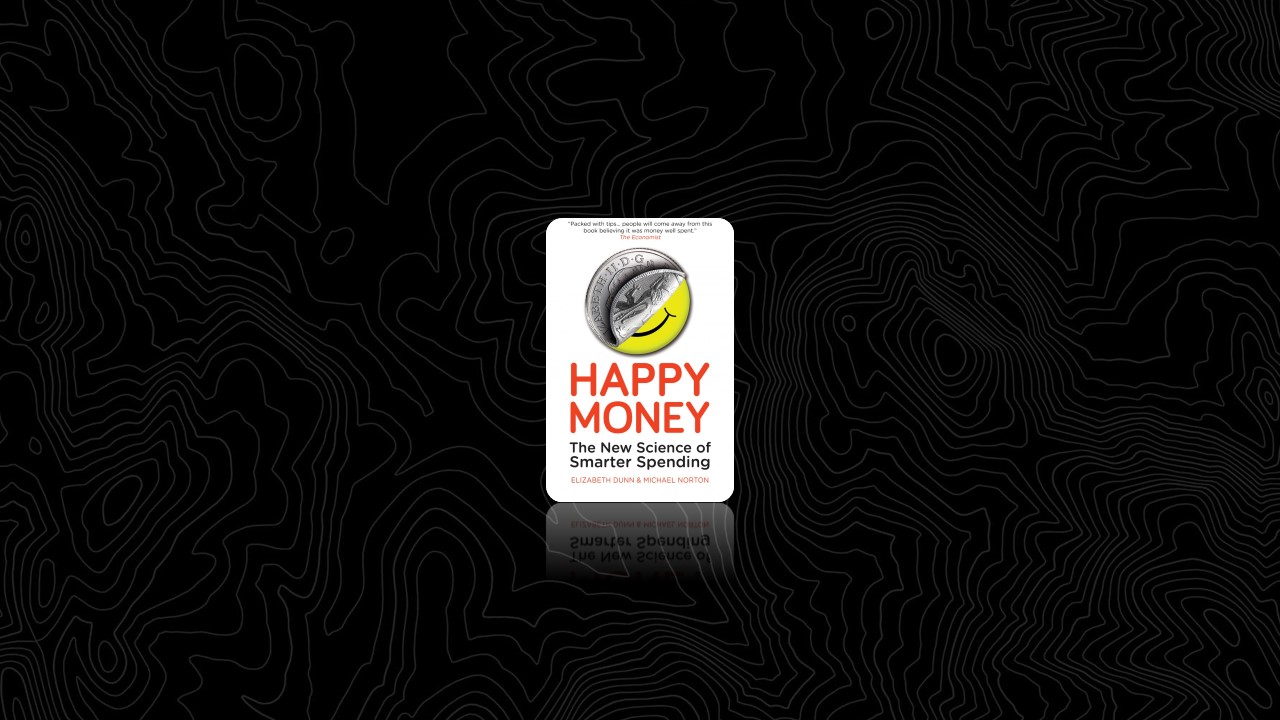Buy Experiences
As a child, Marcia Fiamengo, a thirty-year-old nuclear engineer, dreamed of being an astronaut. When she and her husband, John (also a nuclear engineer), first heard about Virgin Galactic, they talked about buying two tickets—when they were old and retired, since the six-figure fee was out of their price range as young professionals. Then, in 2010, Marcia’s life changed in an unexpected and devastating way. John became sick and passed away. When Marcia received the money from John’s life insurance policy, she couldn’t imagine doing anything with it, and put it away while she grieved. And then one day it hit her: What better way to use this money than to honor their dream and buy a ticket to space? As Marcia put it, John’s death reminded her that “life is short and fragile.” These amazing experiences shouldn’t be put off until a better time. You may and George Loewenstein:off:0000000h never get the chance to experience them.
Even if you’re not in the market for a ticket to space, try this simple exercise: Think of purchases you’ve made with the goal of increasing your own happiness. Consider one purchase that was a material thing, a tangible object that you could keep, like a piece of jewelry or furniture, some clothing, or a gadget. Now think about a purchase you made that gave you a life experience—perhaps a trip, a concert, or a special meal. If you’re like most people, remembering the experience brings to mind friends and family, sights and smells. Which of these purchases made you happier?
Faced with this question, some 57 percent of Americans reported that the experiential purchase made them happier than the material purchase, while only 34 percent reported the opposite. This difference was more pronounced among women, young people, and those living in cities and suburbs. But the same basic pattern emerged even for men, the elderly, and country dwellers. In study after study, people are in a better mood when they reflect on their experiential purchases, which they describe as “money well spent.”
You don’t need to spend $200,000 to capitalize on the principle of buying experiences. Studies show that even when people spend only a few dollars, they get more lasting pleasure from buying an experience such as playing a video game or listening to a song than from buying a material thing like a key chain or a picture frame.
Beyond tunes and trinkets, the day-to-day spending habits of Americans provide a window into the value of buying experiences. One ongoing study has tracked how much money adults over age fifty spend on just about everything, from refrigerators and rent to alcohol and art.
When researchers link these spending choices to happiness, only one category of spending matters. And it’s not refrigerators, or even alcohol. It’s what the researchers label “leisure”: trips, movies, sporting events, gym memberships, and the like. People who spend more of their money on leisure report significantly greater satisfaction with their lives. Not surprisingly, the amount of money these older adults reported spending on leisure was dwarfed by the amount they spent on housing. But housing again turned out to have zero bearing on their life satisfaction.
Make It a Treat
Knowing that something won’t last forever can make us appreciate it more. For adults in their sunset years, that “something” becomes life itself. While young people seek abundance, older adults engage in a kind of pruning process, trimming away the people and things that don’t deliver an emotional payoff.
In 1995, at the age of 120, a Frenchwoman named Jeanne Calment officially became the oldest person ever. When a Newsweek reporter asked her about the sort of future she envisioned for herself, the super-centenarian replied, “A very short one.” Recognizing that an end is near holds a key to happiness, helping us turn readily available comforts back into treats.
This idea also helps to explain an enduring puzzle of forgone pleasure: Why don’t people get around to visiting famous landmarks in their own hometown? After living in London for a whole ye Stone, “Time Use and Subjective Well-Being in France and the U.S.anlear, residents typically report that they’ve visited fewer landmarks—from Big Ben to Kensington Palace—than visitors who have only been there for two weeks.
Although London attracts more international visitors than any other city in the world,24 most London residents report having visited more landmarks in cities other than their own. Only when they themselves are about to move away, or when out-of-town guests come to visit, do they seek out the sights of their own city. When people get around to visiting their hometown landmarks, they report enjoying the experience. The trouble is that when a pleasurable activity is always available, we may never get around to doing it, thereby missing out on a relatively inexpensive source of happiness.
The Big Ben Problem suggests that introducing a limited time window may encourage people to seize opportunities for treats. Imagine you’ve just gotten a gift certificate for a piece of delicious cake and a beverage at a high-end French pastry shop. Would you rather see the gift certificate stamped with an expiration date two months from today, or just three weeks from now? Faced with this choice, most people were happier with the two-month option, and 68 percent reported that they would use it before this expiration date.
But when they received a gift certificate for a tasty pastry at a local shop, only 6 percent of people redeemed it when they were given a two-month expiration date, compared to 31 percent of people who were given the shorter three-week window. People given two months to redeem the certificate kept thinking they could do it later, creating another instance of the Big Ben Problem—and leading them to miss out on a delicious treat. Several years ago, Best Buy reported gaining $43 million from gift certificates that went unredeemed, propelling some consumer advocates and policy makers to push for extended expiration dates. But this strategy will likely backfire. We may have more success at maximizing our happiness when treats are only available for a limited time.
Pay Now, Consume Later
Technological innovations (along with the occasional awkward dinner date) have encouraged us to pay later and consume sooner. People’s mixed feelings about employees of the United States Postal Service notwithstanding, the speed with which products purchased from around the globe reach consumers has steadily increased. Services like “same-day delivery” and “next-day shipping” are ubiquitous. Innovations in digital technology have accelerated this trend to what we might call “same-second delivery.” In a 2010 poll conducted by the Consumer Electronics Association, peace and happiness ranked at the top of Christmas wish lists. But by 2011, both had been edged out by the iPad. Devices like the iPad allow consumers to download everything from books and games to movies and music in an instant, narrowing the gap between desire and fulfillment to a couple of clicks and a matter of milliseconds. While convenient, this widespread pattern—consuming now and paying later—can be counterproductive for happiness. Instead, you’ll get more happiness for your money by following a different principle: pay now, and consume later.
People will only seek out opportunities to postpone consumption if they recognize the value of delay. But this insight is surprisingly elusive. While students who waited to eat a Hershey’s Kiss enjoyed it more than students who ate it right away, these same individuals failed to recognize the benefits that delay provided. They didn’t think they’d enjoyed the chocolate any more than usual.
Because the wait itself was unpleasant, they stated that they would rather just eat the chocolate right away next time. Worse still, students who only imagined eating the chocolate thought that the delay would make them enjoy the Kiss less than if they ate it immediately.
Invest in Others
humans are predisposed to experience joy from giving, even young children might derive pleasure from donating their resources to others. As anyone who has ever tried to get a child to share anything with anyone knows, generosity does not always come easily to children. Could investing in others lead to happiness even for these tough customers?
In an experiment with twenty toddlers on the cusp of turning two, each tot met several puppets, who all happened to like Goldfish crackers and Teddy Grahams.
The experimenter gave each puppet one of these treats, and the puppets pretended to eat their treats by making “YUMMM” eating noises. Next, the toddlers met a new monkey puppet, aptly named Monkey, who they were told also loved treats. The toddlers got eight treats of their own, and then the fun began. The experimenter handed toddlers a treat from her own private stash and suggested that the child give it to Monkey. But then the experimenter asked toddlers to give one of their own precious treats to Monkey.
What made toddlers happiest? As you might guess, two-year-olds have a hard time filling out happiness scales, so the researchers coded the toddlers’ facial expressions for spontaneous signs of happiness. How happy did they look? Toddlers looked pretty happy when they received eight treats for themselves. Critically, however, giving treats away to Monkey made toddlers happier than when they received treats for evocative as the present sh themselves. Perhaps most surprisingly, toddlers were happiest of all when they gave their very own treat to Monkey. Faced with the toddler equivalent of gold (Goldfish crackers), children derived more happiness from giving this precious resource away than from getting more of it themselves. And the impact of investing in others on happiness was biggest when giving was most costly—when the treat came from their personal stash.
Some parents may wonder if their children are in fact part wolf, and missed out on this lovely component of human nature. Sure, sometimes little Caitlin or Jimmy toddles up to you, offering you one of their Cheerios and breaking into a delighted smile when you accept. But other times, asking children to share results in Cheerio-soaked mayhem. Although the warm glow of giving can be detected in countries around the world and even among young children, these findings don’t mean that people always experience pure, unmitigated happiness from helping others. It almost goes without saying that individuals differ in both their proclivity to share with others and the joy they experience from doing so. As a graduate student, Liz was frequently rebuffed when she attempted to take bites of food from the plate of her fully grown and otherwise charming boyfriend Benjamin (whom you may remember from chapter 2). Reflecting on his childhood, Ben’s mother shook her head and explained sadly, “Benjamin just never liked to share.”
Even leaving aside such individual differences, research shows that the nature of the giving situation matters. Investing in others can take a seemingly limitless variety of forms, from donating to a charity that helps strangers in a faraway country to buying lunch for a friend. When does giving promote the most happiness? Understanding the answer to this complex question can help us get the biggest happiness bang for our prosocial buck—and can help us create positive giving experiences for our children, clients, customers, and employees. Below, we describe three strategies designed to boost the impact of investing in others: Make It a Choice, Make a Connection, and Make an Impact.


